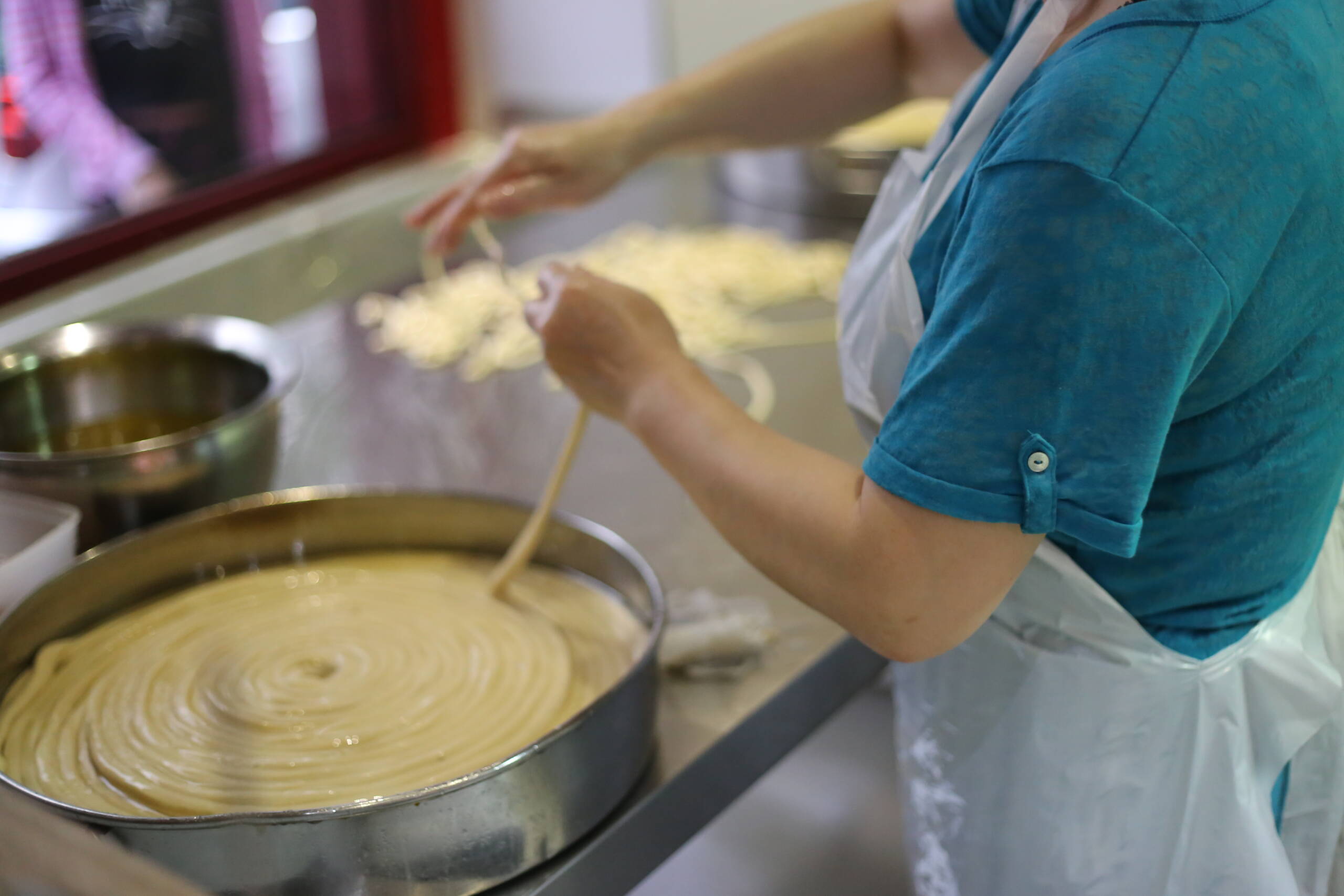There’s a hypnotic rhythm to the art of Chinese noodle making, and this photo catches that quiet magic in motion. You see a woman in a simple turquoise blouse and white apron, her hands stretching and guiding a long rope of dough into delicate coils. In the metal tray below, the dough spirals gracefully, forming a circular bed that looks almost like a whirlpool frozen in time. The countertop behind her is scattered with strands of noodles already laid out, a sign of both repetition and mastery. It’s not a machine doing the work—it’s human touch, precision, and years of practice shaping something as humble as flour and water into strands of culinary heritage.

Hand-pulled noodles (拉面, lamian) are one of the crown jewels of Chinese food culture. What looks deceptively simple is actually a choreography of pulling, stretching, folding, and twisting, with each motion dividing the dough into thinner and thinner strands. The process is equal parts science and art: the gluten structure in the dough must be just right, the pull must be firm but gentle, and timing is everything. For travelers, watching this unfold is as memorable as tasting the final steaming bowl of noodles swimming in rich broth.
Culinary tourism is at its most powerful when it gives you a front-row seat to traditions like this. It’s not just about ordering a dish at a restaurant—it’s about peering into the kitchen, seeing the labor, the flour-dusted surfaces, the steady hands at work. When you travel through regions of China known for their noodles—be it Lanzhou with its famous beef noodle soup or Xi’an with its wide, belt-like biangbiang noodles—you’re stepping into living history. Each region has its own style, its own flair, but the essence remains the same: the noodles connect people across generations and geographies.
What makes this experience so enchanting for travelers is the intimacy. You’re not just an observer; you’re part of the story unfolding in front of you. You carry home not only the taste of the broth and the chew of the noodles, but the memory of the motion—the way the dough stretched and sang under practiced hands. In that sense, Chinese noodle making isn’t just a cooking technique; it’s a cultural performance, a gift to culinary tourists who know that sometimes the most beautiful travel experiences happen not in grand monuments but in humble kitchens.
Leave a Reply